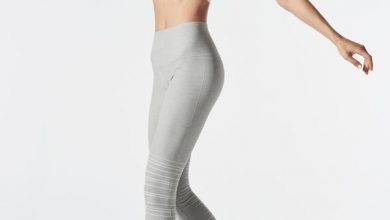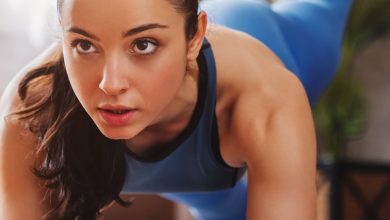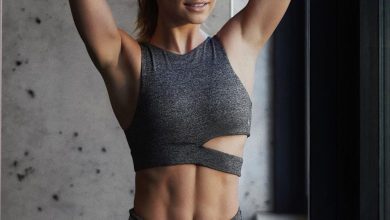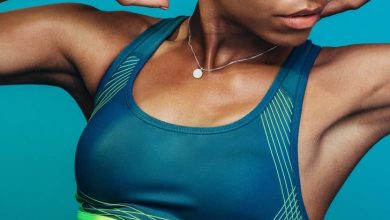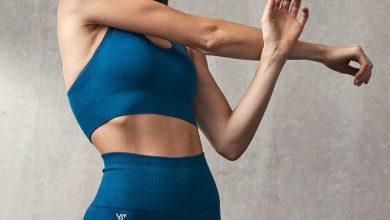Pilates Reformer Full Body Workout: Sculpt and Strengthen Your Body
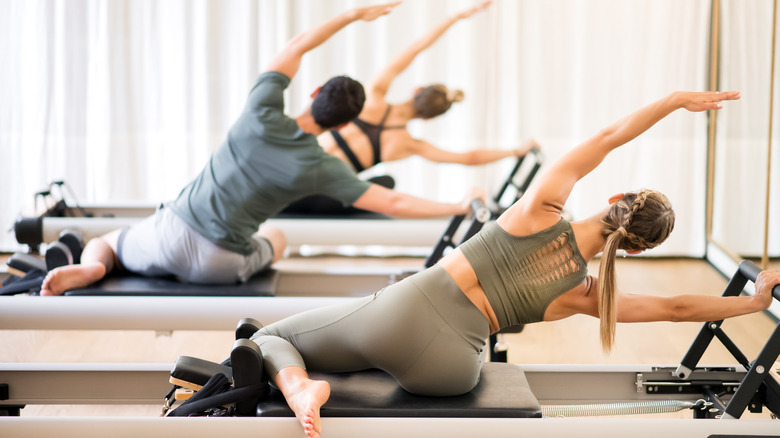
Pilates Reformer is a unique exercise apparatus that utilizes a sliding carriage, springs, and various adjustable components to provide resistance-based workouts. It was developed by Joseph Pilates and has gained popularity due to its ability to improve flexibility, balance, strength, and posture. The exercises performed on the Reformer engage multiple muscle groups simultaneously, resulting in a full body workout that can be customized to individual needs.
Footwork: Building a Strong Foundation
In the first exercise of our Pilates Reformer full body workout, we focus on footwork. This exercise targets the muscles of the lower body, including the calves, hamstrings, and glutes. By pushing against the footbar and sliding the carriage, you activate these muscles and improve stability and alignment.

Opposite Leg Lifts: Toning the Lower Body
Next, let’s move on to opposite leg lifts. This exercise helps to tone and strengthen the muscles of the legs and buttocks. By lying on the carriage and using the straps, you can perform controlled leg lifts to target the quadriceps, hamstrings, and glutes. It’s an excellent exercise for sculpting your lower body.

Hip Rolls: Strengthening the Core
The hip roll exercise focuses on strengthening the core muscles, including the abdominals and lower back. By lying on the carriage with your knees bent, you can lift your hips and roll your spine, engaging the core and improving spinal mobility. This exercise helps to develop a strong and stable core, which is essential for overall body strength.


Center Tricep Press Bend: Sculpting the Arms
To target the muscles of the arms, specifically the triceps, we have the center tricep press bend exercise. By sitting on the carriage and holding the straps, you can perform a bending motion while extending your arms. This movement effectively engages the triceps and helps to tone and strengthen the back of the arms.




Knee Stretches: Enhancing Flexibility and Balance
Knee stretches are excellent for improving flexibility and balance. By kneeling on the carriage and using the straps, you can perform controlled knee movements, bringing the carriage towards you. This exercise engages the core, quadriceps, and hamstrings while challenging your balance and stability.

Round Back Knee Stretch: Engaging the Abs
For a challenging abdominal exercise, we have the round back knee stretch. By sitting on the carriage and rounding your spine, you engage the abdominal muscles. Then, by extending and flexing your knees, you further activate the core, targeting the rectus abdominis and obliques. This exercise helps to develop a strong and toned midsection.




Rocket Side to Side: Working the Obliques
The rocket side to side exercise is ideal for targeting the oblique muscles, which are located on the sides of your abdomen. By sitting on the carriage and holding the straps, you can perform controlled side-to-side movements, engaging the obliques. This exercise helps to sculpt and define your waistline while improving stability and balance.


Bicep Curl: Developing Arm Strength
Let’s focus on the biceps with the bicep curl exercise. By sitting on the carriage and holding the straps, you can perform controlled curling motions, engaging the biceps. This exercise helps to develop arm strength and definition while improving overall upper body stability.


Bend: Targeting the Back Muscles
Lastly, we have the bend exercise, which targets the muscles of the back. By sitting on the carriage and bending forward while holding the straps, you engage the muscles of the upper and lower back. This exercise helps to strengthen the back muscles, improve posture, and reduce the risk of back pain.

Cool Down: Rest and Rejuvenate
After an intense Pilates Reformer full body workout, it’s essential to allow your body to rest and recover. Take a few minutes to perform gentle stretching exercises and deep breathing to cool down your muscles and promote relaxation. This cool-down phase helps to prevent muscle soreness and promotes overall well-being.



